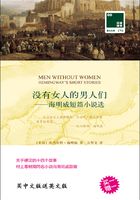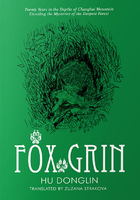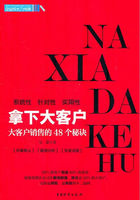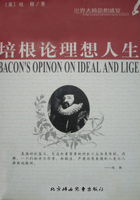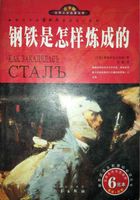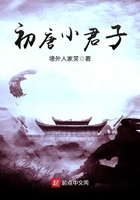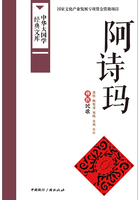Liu Zhenya analyzed the tense situation of lacking coal, electricity, oil and transportation capacity. He thought the problem could potentially occur every month and every year. The fundamental method was not producing more coal and reducing the price of coal. The fundamental reason for this was the differences of production forces, resource distribution and the differences between industries. China's manufacturing center and major manufacturing areas were in the Pearl River Delta and Yangtze River Delta, while China's main energy base for hydropower and thermal power was in the northwest and southwest. Power plants were mainly built near key cities that had large production forces. Therefore, roads were all linked to the city centers. Coal was transported from areas far away from the cities through land routes, water routes and then land routes again. After all that trouble, the price of coal naturally went up. When coal needed to be transmitted, the transportation capacity was limited, an intermediate process was added between mining and the use of the coals and coal prices rose, the electric industry would lose the power to control the health of the industry. The electric industry gave its initiative to develop to other industries. As a result, a vicious circle was formed. The more generator sets we had, the more burdens we had and the more losses we had.
What was the way forward? Liu Zhenya and members of the SGCC group put forward the strategy of "One UHV and Four Large-Scales", which meant using UHV projects to develop large-scale hydropower plants, large-scale coal power plants, large-scale nuclear power plants and large-scale renewable energy power plants. They made the following calculation. The annual electricity power transmitted by a ±800-kilovolt UHV line is 25 million tons of coal. A single-track train can transport 10 million tons of coal annually. The coal here refers to unprocessed coal, not standard coal. 40% of China's coal reserve is in Xinjiang, which is thousands of kilometers away from China's manufacturing centers. If transportation costs 0.15 yuan per ton for every kilometer, then the expense will be 450 yuan for 3, 000 km, which equals 600 yuan for standard coal. Therefore, the most economical way was to build large-scale coal power plants. We could build several power plants near a large coal mine with the output reaching hundreds of millions of tons of coal. The power plants could use the recycled water of the mine to generate power and place the coal ash in the mine to create a recycling economy. In this way, the checks, reparation, operation and management of the power plants could be realized through a one-package service at a lower cost, and it would be economical to use UHV lines to transmit electricity.
We stood in Beijing and looked to the southwest. China's electric industry should rely on water in the southwest. China is the country that has the richest hydroelectric resources in the world. The exploit capacity is over 400 million kilowatts. However now, the installed capacity is just 200 million kilowatts. The water flows eastwards to the sea. If we do not make use of it, it will be a waste. In Tibet, the hydroelectric resources that can be exploited reach over 100 million kilowatts. The installed capacity could reach 70 million kilowatts between the 200-kilometer river areas where the Yarlung Tsangpo River changes its path, which surpasses the total installed capacity of Jiangsu Province since the PRC had been established. Tibet, Yunnan and Sichuan have the largest potential in hydroelectric resources, but many are still not exploited. Even if we exploit them, the local areas could not consume all the electricity produced. The installed capacity could reach 60 to 70 million kilowatts in the middle and lower part of the Jinsha River and the installed capacity of Xiangjiaba and Xiluodu could reach 70 to 80 million kilowatts. Therefore, long-distance UHV transmission was necessary.
The nuclear power industry is a young industry. After the reform and opening up of China, the development of the nuclear power industry sped up with the establishment of the first nuclear power plant - the Qinshan nuclear Power Plant. China caught up with the world trend in this aspect. Liu Zhenya made a calculation. A nuclear power plant has 6 to 8 generation sets, each of which can produce 1 million kilowatts. 6 generation sets mean 6 million kilowatts. The surrounding areas of the nuclear power plants could not use all the electricity generated. Only by building an electric highway and sending out power could we make the electric network recycle and develop.
We looked to the northwest and realized that China's electric industry should rely on the wind of the northwest. The vast Gobi desert was the base of clean energy. Winds blow 24/7 there. Wind turbine generators could work for 2,000 hours and solar energy generators more than 1,000 hours. The local areas could not use all the energy and they looked forward to transmitting it. Therefore, the power here could be transmitted to the faraway manufacturing centers in the Yangtze River Delta and Pearl River Delta.
When we had UHV projects, the concept of the strong and smart grid came into being. Liu Zhenya felt that without UHV, no matter how smart the grid was, the electricity could not be transmitted. UHV network was made smart when the network had been made strong. This technology was unique in the world. The aspiration of SGCC was to design the strong and smart grid by mixing UHV AC and DC. AC was used to link the network and DC was used to transmit electricity from one point to another, which was far away. Their development goal was to reach 1,000 kilovolt of AC and ±800 or ±1,000 kilovolts of DC. They had built the ±800-kilovolt DC project and were preparing for the ±1,000-kilovolt DC one. Now the transmission distance of the ±800-kilovolt DC project is around 2,500 km. One line can transmit 7.2 million kilowatts, which means one line can transmit the electricity produced by fifteen 600,000-kilowatt generation sets if the installed capacity is 9 million kilowatts. China is a country with vast areas and abundant resources. Transmitting electricity using the ±1,000-kilovolt DC line can reach any place 4,000 to 5,000 km away. Liu Zhenya called it the intercontinental strategic missile of the electric industry.
With the intercontinental strategic missile of the electric industry, the abundant coal resources in Ili and other places in Xinjiang could be turned into electricity and be transmitted directly to Shanghai after power plants were built there. Even resources in other countries could be included in the strategic resource allocation map of China's economic development. From this perspective, UHV projects could undoubtedly help SGCC climb the highest peak of the world's electric industry.
Following this idea, SGCC at first built the 750-kilovolt national prototype project from Guanting, Qinghai to East Lanzhou, Gansu. The project was started in the spring of 2003 and was put into operation in September, 2005.
With the 750-kilovolt EHV project high above the Qinghai-Tibet Plateau, the 1,000-kilovolt UHV AC project was about to begin.
With years of scientific experiments behind them and the experiences of Wuhan High Voltage Research Institute, the day when the Chinese people could control and possess UHV projects was not far away.
On September 16, 2006, the building of the UHV experiment base in Wuhan began. With a miraculous speed rarely seen in China, it took 44 days to finish the general installation. The total weight of the components installed in the base reached more than 1,000 tons. It was put into operation on February 13, 2007. This demonstrated that people in SGCC possessed UHV technology with its intellectual property rights.
If you want to see flowers blossoming in the yard, you must wait for the spring to come. After years of arguments, prototypes and experiments, China's UHV R&D elite team consisting of ten thousand people finally received a license from the NDRC. The project started in southeast Shanxi, Nanyang of Henan and Jingmen of Hubei between December 27thand 29th.
After two years of construction, the UHV project stood inside China with a national height and a lofty appearance. Before the bell of January 1, 2009, the debugging of the project was finished. The 168-hour trial operation began.
On January 6th, the Southeast Shanxi - Nanyang - Jingmen UHV project was put into operation. The next day, Premier of the State Council Wen Jiabao gladly wrote, "The trial operation of the UHV AC prototype has finished. It demonstrates that we have made a significant breakthrough in developing long-distance, large-capacity and low-loss UHV core technology and producing related equipment by ourselves. It has great significance in protecting national energy safety and making the electric power supply more reliable."
With this world-level technology and the spirit of a big country, Liu Zhenya flew to the US in April.
The aircraft landed in the brightly-lit New York International Airport. It was one o'clock in the morning when Liu Zhenya arrived at the hotel. He could only stay in New York for a day, but he had many friends to meet. Because of the schedule, he only planned to meet the general manager of GE Company and visit their superconducting cable. He didn't arrange any other activities. However at 7 o'clock in the morning, his companions said to him, "General Manager Liu, Mr. Vikram Pandit, CEO of Citibank, invited you to have breakfast together."
"Oh!" Liu Zhenya was surprised. He said, "How did he know my schedule? We didn't inform Citibank that I would be coming to New York."
"The China Offce of Citibank knew of your travel to the US. Mr. Vikram Pandit and the second head of Citibank came together. They said as the host they should do something."
Liu Zhenya nodded and said, "OK. We are guests and we follow the arrangement of the hosts."
Mr. Vikram Pandit stretched out his hand to Liu Zhenya and said a sentence in Chinese, "Welcome!" His Chinese was not good. This was the first time that the entrepreneurs of China and the US shook hands on an equal basis. Liu Zhenya had been to the US many times before. The US side was very polite. Though it seemed very equal at first sight, the situation was not equal at all. It seemed that the arrogant Americans looked down on the Chinese offcials and entrepreneurs. The final say had never been on the Chinese side. This was because of unbalanced national power and strengths. However this time, after the global economic crisis, the Chinese had not only tried to save itself, but also tried to save the world. The Americans started to realize the strength of China. In particular, SGCC put into operation the first commercial UHV project in the world on its own. The Americans changed from arrogance to humility.
"Mr. Vikram Pandit, I'm very sorry. This time I'm staying in New York for only a day. Therefore, we didn't tell you about my visit here," Liu Zhenya said.
"General manager Liu, now we meet. I know that you have a busy schedule, so I came here without your invitation. During breakfast, we can call on our past memories, and I'd like to send you a message. China now has the largest electric market in the world. Citibank is the largest bank in the US. We have abundant capital and we can support the development of China's electric market."
"Thank you, Mr. Vikram Pandit."
"My colleagues in the Chinese Offce of Citibank said your company has just successfully put into operation the first UHV project in the world. This is a striking piece of news for the international electric field."
"Yes," Liu Zhenya nodded.
"But the US does not have UHV projects. The UHV market has bright prospects. Citibank has 147 branches around the world. No matter where your company goes, we can provide services. We will be your staunch supporters."
"OK!" Liu Zhenya raised his glass. He drank a glass of soda water with the CEO of Citibank as if they were drinking wine. After breakfast, Mr. Vikram Pandit warmly invited Liu Zhenya to visit the headquarters of Citibank.
Liu Zhenya shook his head and said, "Thank you, but we need to visit GE's superconducting cables. We do not have time today. But we can arrange something another day."
"OK! I'm looking forward to your next visit to New York. I hope Mr. Liu will give Citibank a chance."
Liu Zhenya nodded and said, "I also hope we can meet in Beijing in China."
"OK! The ancient orient is my dreamland."
After Mr. Vikram Pandit left, Liu Zhenya got into the car sent by GE. The car went directly to the helicopter flight platform. There were two helicopters waiting there. They would take the helicopter to the GE factory to see the superconducting cable.
Two hours later, the helicopter arrived at the green grassland. Liu Zhenya jumped from the ladder in the wind and then got into a car to go to GE's factory that produced the superconducting cables. He visited their first-class production line and machines. When he returned to the hotel in New York, it was already 4 o'clock in the afternoon.
GE Company called him and said, "The President and CEO of GE, Mr. Immelt, was participating in the general meeting of stockholders in Atlanta. In order to express his thanks to Liu Zhenya, general manager of SGCC, for his concern and appreciation, Mr. Immelt is now on the plane to New York. He will invite you Chinese friends to dinner tonight."
That night at dinner, Mr. Immelt, Liu Zhenya and four other people talked happily with each other. However, most of the time, it was Liu Zhenya speaking to them because the boss of the US Westinghouse Electric Equipment Manufacturing Enterprise did not know as much as SGCC. He couldn't understand many of the things related to UHV and the strong and smart grid that Liu Zhenya talked about. After listening to the translation, he would ask many times before he understood.
That night when Liu Zhenya came back to his hotel room, he was glad. He felt that the experiences of the head of Chinese state-owned enterprises were richer than that of the CEOs in American enterprises. He had started work at the lowest level. He was once a farmer and an electrician. He worked in an electric factory and the administration of power supply. He had experience in many different posts. Though perhaps he had less knowledge than his US counterparts in certain fields, the broadness of his knowledge surpassed the CEOs and chairmen of the boards in the US.
At night, he flew to Washington. He was still suffering from jet-lag. He could see green grassland and cherry blossoms far away in the White House.
At about 7 o'clock in the morning, Mr. Sullivan, deputy Secretary of State responsible for the environment came to have breakfast with Liu Zhenya and the elite team of SGCC. At breakfast, Sullivan said, "I will accompany you to meet Mr. Steven Chu, Secretary of Energy, at 9 o'clock. He is a Nobel Prize winner in physics. And he is a Chinese American."
More than an hour passed. Still deep in conversation, one of Sullivan's subordinates came and said, "Mr. Deputy Secretary of State, it's time to go to the Department of Energy."
Therefore, Liu Zhenya and his group got into the car and went directly to the US Department of Energy.
The Cadillac stopped suddenly. Steven Chu, the US Secretary of Energy, was standing in front of the gate, waiting for Liu.
"Welcome, Mr. General Manager. Welcome to the US Depart- ment of Energy." As soon as Liu Zhenya stepped out of the car, Steven Chu came to him and said, "I have long been waiting for this moment."
Steven Chu was really a scientist, and it was evident that he had prepared. He had done a lot of homework about UHV and had a panoramic view of SGCC. When the topic came to UHV, he suddenly said in English, "I envy China for its UHV projects."
When the translator said "envy", Liu Zhenya was shocked. He could not believe his ears and asked the translator, "Did he really mean 'envy'? Is this what he meant?"
Secretary of Energy Steven Chu said, "Yes, I envy you. You Chinese walked before the US in UHV projects. But despite the envies, the US would like to share this fruit with you."
"OK." Liu Zhenya tapped at the handrail gently. He was full of pride as the boss of a Chinese state-owned enterprise.
Though Steven Chu was the US Secretary of Energy, he had Chinese blood. He upheld the traditional practices of Confucius culture which advocates that one can always learn from others. He asked humbly, "Mr. Liu, I heard that you would put forward the concept of the strong and smart grid in the UHV International Conference. Is there any link between them?"
Liu Zhenya said, "As we mention UHV and the smart grid, we should not just focus on the smart grid. We should pay attention to the strong smart grid."
"What is the relationship between the strong grid and the smart grid? Could you please explain that to me with plain words?"
"I'll give you an analogy. There is a male model and a little man. The male model has a handsome figure but he is a fool. The little man is very talented but he does not have a handsome figure. If we put the brain of the little man onto the figure of the male model, we will have a talented and handsome man. The strong and smart grid is like the magic integration of the body of the male model and the head of the little man."
"Haha!" Steven Chu smiled and said, "Mr. Liu, you are very humorous. I get what you said."
Liu Zhenya then continued, "The strong and smart grid put forward by the Chinese first needs a strong electric network to be the skeleton. Then we need to make it smart. The smart grid cannot work well without the strong network."
"In the US, we experienced a blackout. We need to learn from the Chinese," Steven Chu said. "The US needs UHV projects. Wind power in central America is relatively good. The coastal areas in the west and in the east have prosperous economies. The transmission distance is 1,500 to 2,000 kilometers. And the transmission distance of your UHV project is between 2,500 km and 4,000 km. The UHV projects of China inspired us very much."That noon, Liu Zhenya returned to the hotel from the US Department of Energy. 167 US enterprises co-hosted a luncheon for guests from SGCC. When standing on the podium and speaking to the audience, Liu Zhenya was very glad. Looking around the big banquet hall, there were no vacant seats. In the past, the Chinese could not even have bought such an opportunity, but that day, it was the Americans that had invited them to lunch without any request.
How would the Chinese pay back the 167 US enterprises? Liu Zhenya gave a keynote speech and answered the questions of the US entrepreneurs about UHV projects and the strong and smart grid.
They toasted each other during lunch. Through the red wine, they saw the rise and rejuvenation of red China which won true respect from the US political arena and US enterprises.
In the afternoon, the chairman of the Federal Energy Regulatory Commission met with Liu Zhenya and his colleagues. Looking back on his trip to the US, Liu felt that people from SGCC received a courteous reception there. Later, when Liu Zhenya had an interview with a writer, he said, "On the one hand, China's overall national strength has improved in recent years. On the other hand, the development of SGCC in recent years has helped it stand in the forefront of world electric innovation. It has become the leader in electric innovation. Besides, we have successfully built UHV projects, which made our counterparts in the US and European countries admire us very much."
At the UHV International Conference, the concept of the strong and smart grid brought by the Chinese brought a fresh breeze to the world electric field. They thought what China put forward was big system, not a separated one, but the development of the smart grid had political barriers in the US because every state of the US has independent state laws. The grid there could not be alined into one network. Each state is like a traffc policeman that governs one part of the road. They could not have a strong integrated network. From this perspective, they envied China.
SGCC outshone others at the UHV International Conference. After Liu Zhenya finished his speech, electric experts from Europe suggested that a solar energy plant be built in the Sahara Desert and a ±800-kilovolt DC be used to transmit the electricity to Europe.
"When will China's UHV DC project be put into operation?"some experts asked Liu Zhenya.
"It will be put into operation in the first half of 2010."
"OK. You Chinese are excellent!" The foreign experts put their thumbs up and said, "You are the pacemaker of world electric technology innovations."
Reaching such heights of electric technology in the world and with the spirit of China, the general manager of SGCC and his elite team stood on the roof of the world and looked at the earth.
Who Is Driving"Made in China"?
In the history of human civilization, there are two things of China that once frightened Western countries. However the western world could not avoid both of these things at the same time. One was the yellow peril and the other one was "Made in China". The former is a kind of military strength. It happened in the 12th century and is still remembered today by the European people. When Genghis Khan pointed his horsewhip to the sky, the troops of Mongolia fought in Europe. They won many lands and many cities. Their swords glittered like frost and snow. They pierced the European sky and left rivers of blood in the streets. The yellow dusk, the yellow-skined people and the yellow peril once made the European people afraid of everything related to "yellow".
The latter is a kind of economic power, which took place during the 30 years of reform and opening up. "Made in China"sailed across the ocean and went to the US and the Europe like tides. Western journalists exclaimed that even "Santa Claus was outsourced to red China". No family and no city can give up goods made in China.
In 2007, there was popular book written by a female journalist Sara Bongiorni named A Year Without "Made in China": One Family's True Life Adventure in the Global Economy. She lived in a small city called Baton Rough near Louisiana.
She said in her book that products made in China could be found everywhere in every family in US cities and towns. She decided to conduct an experiment. She decided that her family would not buy anything made in China for a whole year. However the results showed that the typical US middle-class family was in low spirits. Her husband did not have suitable shoes to wear. Her 5-year-old son did not have the toys he liked. As a housewife, it cost her much to get along with her housework and the process was painful. At last, she released this "great" test result on Christian Science Monitor. She said, "Now it is diffcult for Americans to live their daily life without products made in China. And it will be even more diffcult to do so in the future."
After this book was published, much discussion arose. The Chinese were happy about the result as they thought "Made in China" was influencing life of people all around the world. The threat of "Made in China" was sometimes more serious than the yellow peril many years ago. On the other side, politicians of the US and the European countries were in low spirits. It could not be regarded as news that the Santa Clauses were made in China. Even military uniforms, military training clothes and the military ranks of Western military powers were made in China, which put them at a loss.

